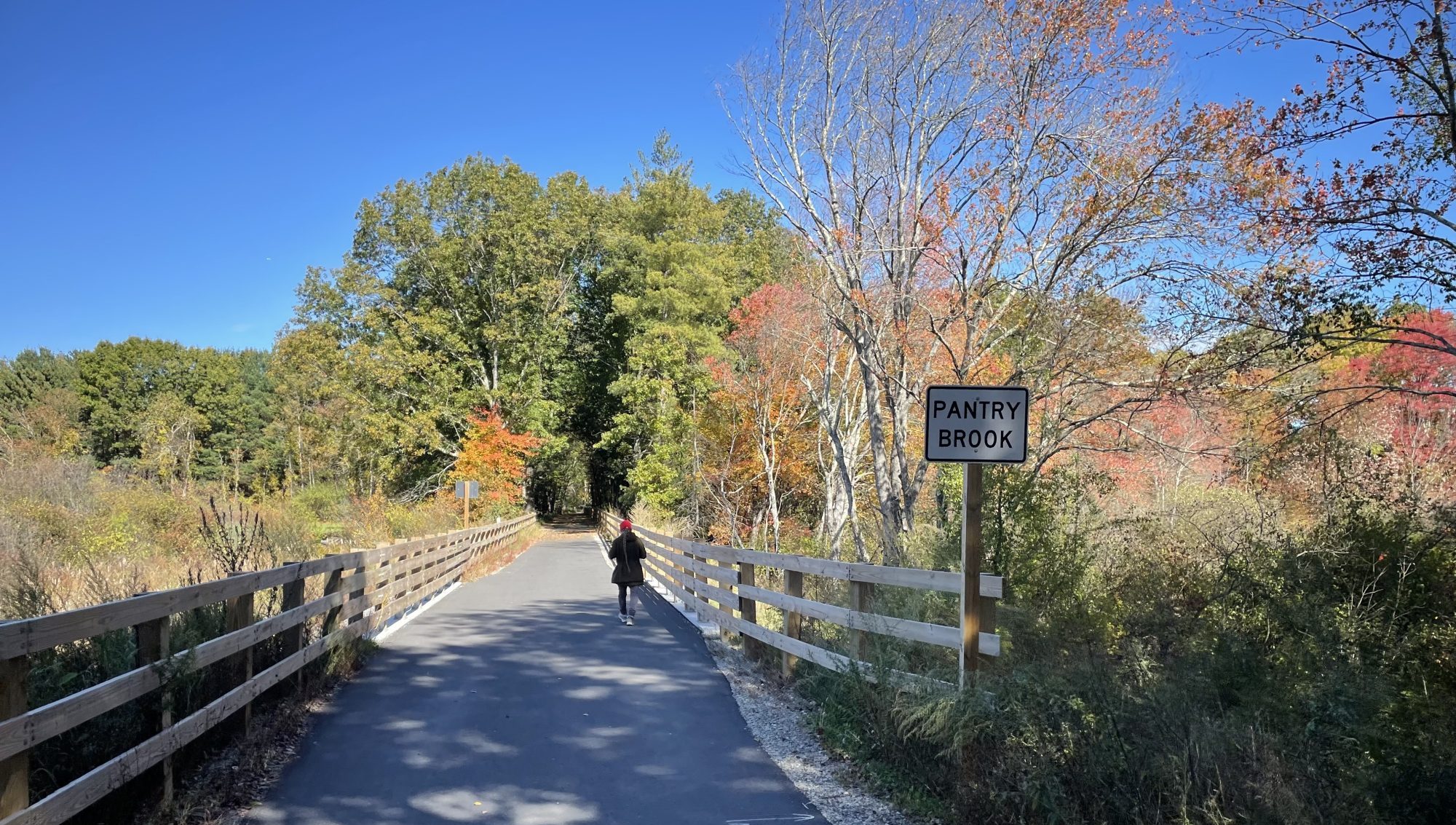Last month, the Salem Police Department announced a controversial new plan to manage the dense crowds of pedestrians that visit the Witch City every autumn. Police are proposing to erect two temporary fences across a major downtown crosswalk, effectively turning two busy sidewalks into enclosed corrals.
The Police Department's crowd-control proposal is focused on the crosswalks where Essex Street meets Washington Street, in the heart of downtown Salem's tourism district.
Salem's Shibuya
Last fall, Jonathan Berk, a local attorney, shot a video of the crowds at the intersection of Essex and Washington and compared it to Tokyo's famous Shibuya crossing, where crowds of 1,000 people or more cross the street at a time.
If you look carefully in Berk's video, which is shot from the southeastern corner of the intersection, you can see some fences blocking off the northern crosswalk, in front of the brick building.
Salem's police department historically dispatches police to direct traffic at this intersection during busy Halloween-season weekends, and for several years, cops have used temporary barriers to block the intersection's northern crosswalk.
New fence proposal would be less flimsy, but still temporary
In an email to StreetsblogMASS, Salem Chief of Police Lucas Miller said that crowds frequently knock those temporary fences over into the street, so his department would like to replace them with something more substantial.
The Police Department proposes two fences along Washington Street where it meets Essex Street in the heart of downtown Salem: one on the eastern side of Washington (see rendering below) and a second along the western sidewalk (rendering at the top of this article).

"The proposal is to replace the free-standing barricades with a temporary fixed-footed system that can be deployed in October only, and (would be) opened during non-peak times, and fully removed when not required outside of October."
Funneling crowds into a single crosswalk makes the crossing even more crowded, but Salem police say that it gives them more control over when people cross.
"I've done this post many times," explained Salem Police Lt. David Tucker during a May 8 presentation to the board of Salem's Redevelopment Authority. "The difficulty is not the vehicle traffic, it's the pedestrian traffic. Trying to manage it with two crosswalks in such close proximity, if you turn your back, people begin to cross one of them and that's why we do the barriers."
We followed up with Chief Miller on Tuesday to ask for additional clarity about how funneling large crowds into a single, crowded crosswalk, instead of letting people use both crosswalks, improves safety at the intersection.
Chief Miller responded that the practice is aimed at mollifying drivers' "frustration."
When heavy foot traffic forces drivers on Washington Street to wait, "the resulting backup and frustration causes an unduly dangerous situation at the intersection," wrote Miller in an email to StreetsblogMASS.
Critics focus on accessibility issues
The proposed fence would block off two ADA-accessible curb ramps with tactile warning surfaces that are designed to indicate a crosswalk for visually impaired pedestrians.
We asked Carol Steinberg, an accessibility advocate and wheelchair user who serves of the board of WalkMassachusetts, whether the fence might run afoul of state and federal accessibility laws.
"There's a principle of 'equal access' that's important," Steinberg told StreetsblogMASS. "Thinking about how able-bodied people get across the street, and can everybody else – blind people and people in wheelchairs – go the same way?"
Steinberg notes that the availability of another crosswalk nearby may be enough to provide equal access – but she also warned that it's more difficult for people in wheelchairs to navigate through confined, crowded spaces.
"If they’re putting up a barrier on an accessible route, I think they might very well need to go to the Architectural Access Board for a variance, and there they could discuss these issues of equal access, and maybe also explain why they need to do it – is it worth the decline in accessibility?"
Crash data indicates other nearby intersections have bigger safety problems
The proposal also provoked a spirited discussion at a City Council budget meeting at the end of May.
Ward 3 City Councilor Patricia Morsillo told city staff "I hate the fence. It's not appropriate at a busy intersection like that... if I'm approaching that fence and I see a group of people, I'm going in the street. I'm not going to enter a fenced area between a building and a fence with a clump of people that I don't know."
"We’re trying to solve a vehicle congestion issue by making it less convenient and safe to walk around downtown Salem," observes Berk, the local attorney.
He suggested that if the city's truly concerned about keeping pedestrians safe, the city could instead block drivers traffic from entering Washington Street, similar to how the city of Boston pedestrianizes Lansdowne Street on Red Sox game days (Salem officials note that the city already does this on the busiest October weekends).
According to MassDOT's IMPACT crash database, there have been 15 crashes within 100 feet of the Washington/Essex intersection since the beginning of 2018.
Only one of those crashes occurred during the month of October.
By contrast, less pedestrian-friendly intersections in the immediate vicinity have considerably higher crash rates.
Since the beginning of 2018, drivers have caused 25 crashes (8 of which happened in October) at the intersection of Essex with Summer Street, a few blocks to the west of Washington, and 35 crashes at the corner of Washington and New Derby Streets, two blocks south of Essex.






